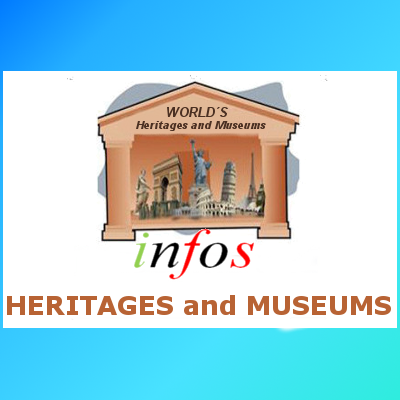What You Need To Know
Makassar sometimes spelled Macassar, Mangkasara’ – is the provincial capital of South Sulawesi, Indonesia. It is the largest city on Sulawesi Island in terms of population, and the fifth largest city in Indonesia after Jakarta, Surabaya, Bandung, and Medan. From 1971 to 1999, the city was named Ujung Pandang, after a precolonial fort in the city, and the two names are often used interchangeably. The city is located on the southwest coast of the island of Sulawesi, facing the Makassar Strait. The city’s area is 19,926 square kilometres (7,693 sq mi) and it had a population of around 1.6 million in 2013. Its built-up (or metro) area has 1,976,168 inhabitants covering Makassar City and 15 districts. Its official metropolitan area, known as Mamminasata, with 17 additional districts, covers an area of 2,548 square kilometres (984 sq mi) and had a population of around 2.4 million according to 2010 Census.
Area: 175.8 km²
Population: Estimate 1.6 million
Currency
The Indonesian Rupiah is the currency of Makassar.
Contact with Australia
Economy
The city is southern Sulawesi’s primary port, with regular domestic and international shipping connections. It is nationally famous as an important port of call for the pinisi boats, sailing ships which are among the last in use for regular long-distance trade. During the colonial era, the city was widely known as the namesake of Makassar oil, which it exported in great quantity. Makassar ebony is a warm black hue, streaked with tan or brown tones, and highly prized for use in making fine cabinetry and veneers. Nowadays, as the largest city in Sulawesi Island and Eastern Indonesia, the city’s economy depends highly on the service sector, which makes up approximately 70% of activity. Restaurant and hotel services are the largest contributor (29.14%), followed by transportation and communication (14.86%), trading (14.86), and finance (10.58%). Industrial activity is next most important after the service sector, with 21.34% of overall activity.
Language
Health
According to data from the Ministry of Health of Indonesia, there are 2454 hospitals around the country, with a total of 305,242 beds – a very low figure of 0.9 bed per 100,000 inhabitants. Most hospitals are in urban areas. Among these, 882 of these hospitals are government owned and 1509 are private hospitals. According to the Worldbank data in 2012, there are 0.2 physicians per 1,000 people, with 1.2 Nurses and Midwives per 1,000 people in Indonesia. Out of all the 2454 hospitals in Indonesia, 20 have been accredited by Joint Commission international (JCI) as of 2015. In addition, there are 9718 government financed Puskesmas (Health Community Centre) listed by the Ministry of Health of Indonesia, which provide comprehensive healthcare and vaccination for the population in the sub-district level. Both traditional and modern health practices are employed. Indonesia’s community health system are organised in three tiers: on top of the chart is Community Health Centre (Puskesmas), followed by Health Sub-Centres on the second level, and Village-Level Integrated Posts at the third level.
Traditional food
Makassar has several famous traditional foods. The most famous is Coto Makassar. It is a stew made from the mixture of nuts, spices, and selected offal which may include beef brain, tongue and intestine. Konro rib dish is also a popular traditional food in Makassar. Both Coto Makassar and Konro are usually eaten with Burasa or Ketupat, a glutinous rice cake. Another famous cuisine from Makassar is Ayam Goreng Sulawesi (Celebes fried chicken); the chicken is marinated with traditional soy sauce recipe for up to 24 hours before being fried to a golden colour. The dish is usually served with chicken broth, rice and special sambal (chilli sauce). In addition, Makassar is the home of Pisang Epe (pressed banana), as well as Pisang Ijo (green banana). Pisang Epe is a banana which is pressed, grilled, and covered with palm sugar sauce and sometimes eaten with Durian. Many street vendors sell Pisang Epe, especially around the area of Losari beach. Pisang Ijo is a banana covered with green colored flours, coconut milk, and syrup. Pisang Ijo is sometimes served iced, and often eaten during Ramadan.
Transport
Makassar has a public transportation system called pete-pete. A pete-pete (known elsewhere in Indonesia as an angkot) is a minibus that has been modified to carry passengers. The route of Makassar’s pete-petes is denoted by the letter on the windshield. Makassar is also known for its becak (pedicabs), which are smaller than the “becak” in the island of Java. In Makassar, people who drive pedicabs are called Daeng. In addition to becak and pete-pete, the city has a government-run bus system, and taxis. The city of Makassar, its outlying districts, and the South Sulawesi Province are served by Hasanuddin International Airport. The airport is located outside the Makassar city administration area, being situated in the nearby Maros Regency. In January 2012 it was announced that due to limited capacity of the current dock at Soekarno-Hatta sea port, it will be expanded to 150×30 square meters to avoid the need for at least two ships to queue every day. A 35-kilometer monorail in the areas of Makassar, Maros Regency, Sungguminasa (Gowa Regency), and Takalar Regency (the Mamminasata region) will be realised in 2014 with cost predicted Rp.4 trillion ($468 million). The memorandum of understanding has been signed on 25 July 2011 by Makassar city, Maros Regency and Gowa Regency. 2014 saw the introduction of bus rapid transit (BRT) – locally referred to as “Trans Mamminasata”. It has some routes through Makassar to cities around Makassar region such as Maros, Takallar, and Gowa. Run by Indonesian Transportation Department, each bus has 20 seats and space for 20 standing passengers.
Weather
The Köppen Climate Classification subtype for this climate is “Am”. (Tropical monsoon climate). The average temperature for the year in Makassar is 81.5 °F (27.5 °C). The warmest month, on average, is October with an average temperature of 82.7 °F (28.2 °C). The coolest month on average is February, with an average temperature of 80.3 °F (26.8 °C). The average amount of precipitation for the year in Makassar is 121.5″ (3086.1 mm). The month with the most precipitation on average is January with 28.9″ (734.1 mm) of precipitation. The month with the least precipitation on average is August with an average of 0.6″ (15.2 mm). In terms of liquid precipitation, there are an average of 187.0 days of rain, with the most rain occurring in January with 27.0 days of rain, and the least rain occurring in August with 2.0 days of rain.











